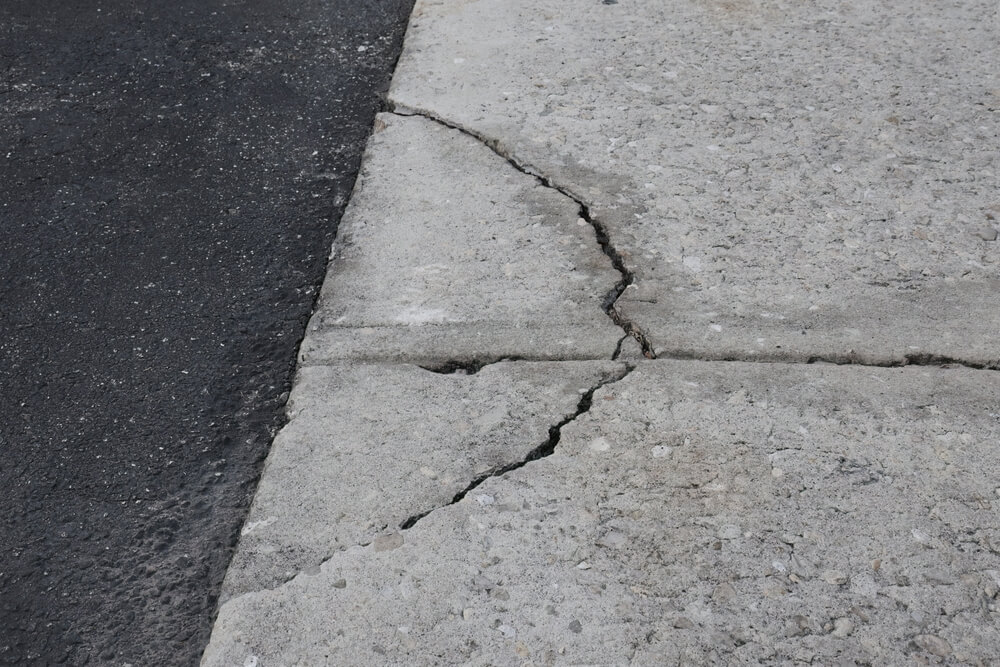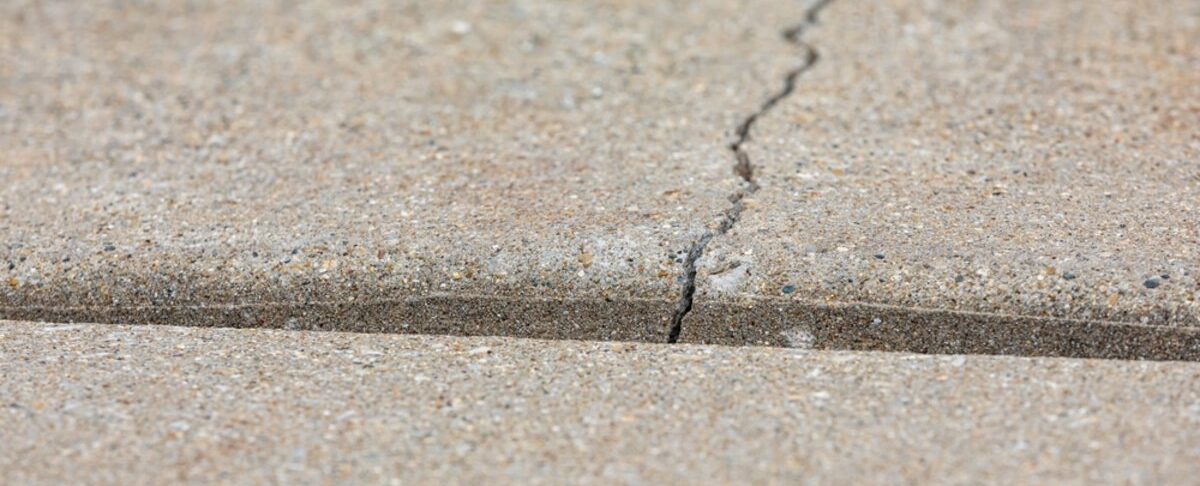When your driveway starts cracking or your foundation shows signs of shifting, the problem might not be what you expect. One hidden force many homeowners overlook is street creep—a slow, steady movement that can cause major structural problems over time.
What Is Street Creep?
Street creep is the gradual expansion and shifting of a street or roadway toward your home. This movement happens because of seasonal temperature changes, particularly in colder climates. As concrete expands in the heat and contracts in the cold, the slabs can push against one another, moving slightly each time. Over the years, this pressure builds up and pushes the road closer to your property, inch by inch.
While this movement may seem small, its effects can be significant. Homes located at the end of a cul-de-sac or along gently sloping streets are especially vulnerable. In these locations, the pressure doesn’t have many directions to escape, so it transfers straight to your driveway, garage floor, and even your home’s foundation.
How Seasonal Changes Trigger Street Creep
Thermal Expansion and Contraction
Concrete expands when heated and contracts when cooled. This is a natural process called thermal expansion. In the summer, street slabs can grow slightly in size, then shrink back in winter. Over time, as the slabs press against each other, they can move downhill or toward open joints—often in the direction of a home’s driveway.
Joint Filler Compression
Streets and driveways are built with expansion joints to handle this natural movement. However, the material in these joints can compress and break down over time. When that happens, the slabs don’t have enough space to expand safely. The only way for that pressure to release is by pushing outward, often toward nearby residential properties.
Signs Your Home Is Affected
Gaps Around Garage Doors
One of the most common signs of street creep is a widening gap between the driveway and the garage floor. If your garage door starts to rub against the concrete or no longer seals properly, shifting pavement may be the cause.
Cracked Driveway Slabs
Cracks that run perpendicular to your driveway (from front to back) can be a red flag. These are often caused by the stress of moving concrete being pushed from the road.
Misaligned Walls or Doors
In more severe cases, the pressure from street movement can lead to misaligned interior doors, uneven floors, or cracks in foundation walls. These symptoms suggest the issue has extended beyond the driveway and is affecting your home’s structural integrity.
Why Street Creep Is a Serious Problem
At first glance, it might not seem like slow pavement movement is a big deal. But over time, even small shifts can lead to costly damage. Concrete isn’t flexible—when it’s forced to move, it cracks. That means repairs for driveways, garage slabs, or foundations can add up quickly.
In areas where street creep is common, homeowners might find themselves repeatedly patching cracks or dealing with stuck garage doors. Left unchecked, the damage can require full driveway replacement or even foundation repairs.
How to Prevent or Stop Street Creep
Install Expansion Joints
One of the best ways to manage street creep is by installing proper expansion joints at the end of your driveway, right before it meets the street. These joints absorb movement from the expanding road and reduce pressure on your property.
Use Control Joints in Concrete
When pouring a new driveway or repairing existing concrete, control joints can help guide where cracks happen—making them less damaging and easier to repair. These cuts allow the concrete to expand and contract without breaking apart.
Monitor Seasonal Shifts
Keep an eye on your driveway and garage during extreme weather. If you notice new cracks or shifting, consult a structural expert or concrete professional. Early detection can save thousands of dollars in repairs.
When to Call a Professional
If you’re seeing signs of foundation cracks, garage misalignment, or large driveway movement, it’s time to get an inspection. A qualified contractor or structural engineer can assess the damage and recommend a long-term fix.
In some cases, this may include cutting out a section of the driveway, installing a permanent expansion joint, or reinforcing the foundation itself. While this kind of work can be an investment, it’s far less costly than letting the problem continue unchecked.
Final Thoughts

Street creep may sound like a minor issue, but its impact on driveways and home foundations can be major. By understanding what causes this slow, steady movement—and watching for early warning signs—you can protect your home and avoid expensive repairs. Regular maintenance, proper joint installation, and professional guidance are key to keeping your property safe from this hidden threat. Contact Richfield Concrete today to learn more.




